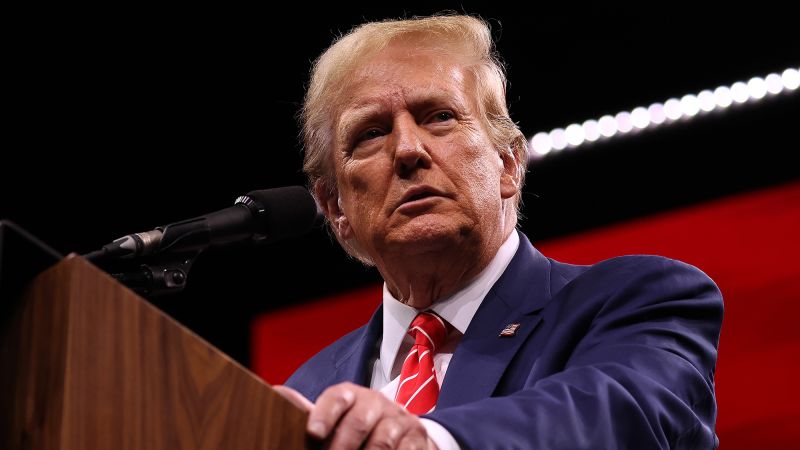Former President Donald Trump’s trade agenda during his potential second term in office would involve tripling down on the trade war he started during his first term. This includes proposing a 60% tariff on all Chinese goods and at least a 10% tariff on all $3 trillion worth of US imports. While Trump claims these aggressive tariffs would protect working-class Americans, new research suggests they would actually do the opposite. A paper by the Peterson Institute for International Economics estimates that Trump’s proposed tariffs would cost consumers at least $500 billion a year, equivalent to 1.8% of GDP, nearly five times more than the US-China trade war in 2018-2019. The typical middle-income household would see a hit of at least $1,700 a year.
The Peterson Institute paper, titled “Why Trump’s Tariff Proposals Would Harm Working Americans,” emphasizes that the estimated $1,700 hit to the typical family is just the minimum impact and does not include damage from foreign retaliation, slower economic growth, and lost competitiveness. The authors warn that the actual impact could be twice as high. Estimates suggest that retaliation from other countries could further damage the US economy. President Joe Biden, despite criticizing tariffs during his campaign, has largely kept Trump-era tariffs in place, even adding more in a targeted manner. Treasury Secretary Janet Yellen called on European nations to join the US in combating cheap Chinese goods entering the global marketplace.
While Trump has legitimate concerns about China’s trade practices, some economists are alarmed at the significant tariffs he has proposed. Moody’s estimates that even with tax cuts to cushion the blow from tariffs, Trump’s trade proposals would cost the US economy 675,000 jobs, worsen inflation, and shrink GDP by 0.6 percentage points. According to the Peterson Institute research, even the high end of projections for revenue generated from these tariffs would fall short of what would be needed to extend Trump’s tax cuts set to expire in 2025. The risk of a broader global trade conflict could also impact international affairs, making it harder for countries to collaborate on crucial issues such as climate change and public health emergencies.
The Peterson Institute authors argue that tariffs are not paid by other nations as suggested by Trump, but are instead fully passed on to US buyers. Experts contend that US consumers and businesses bear the cost of tariffs. The US International Trade Commission found that US importers bore nearly the full cost of tariffs on Chinese goods, steel, and aluminum, with prices increasing by about 1% for each 1% increase in tariffs. Despite the disputes over who pays for tariffs, both parties in Washington are expected to maintain tariffs, especially on China. Tariffs on Chinese goods have bipartisan support as a way to demonstrate toughness on China, even though economists suggest that lower tariffs could help alleviate inflation.
In conclusion, Trump’s proposed tariffs during his potential second term could have significant negative impacts on the US economy, costing consumers billions of dollars annually and potentially leading to job losses and economic contraction. While there are legitimate concerns about China’s trade practices, the approach of imposing massive tariffs may not be the most effective solution. Both Trump and Biden have continued to use tariffs as part of their trade policies, indicating that tariffs are likely to remain a favored tactic in Washington, particularly in dealing with China. The trade landscape could have broader implications for international affairs and cooperation on critical issues, emphasizing the need for a strategic and united response to trade challenges.


